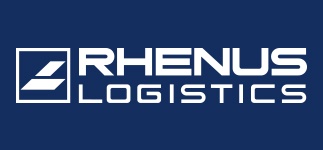In today's globalized economy, optimizing supply chain efficiency is crucial for businesses to remain competitive. One area that plays a significant role in supply chain management is global duty optimization. By effectively managing customs duties and trade regulations, businesses can streamline operations, reduce costs, and enhance overall supply chain efficiency. This blog post explores the concept of global duty optimization and highlights its importance in maximizing supply chain efficiency.
Understanding Global Duty Optimization:
Global duty optimization involves strategically managing customs duties and trade regulations to minimize costs and streamline international trade operations. It encompasses various practices, such as tariff classification, valuation, country of origin determination, and utilizing preferential trade agreements. The goal is to ensure compliance with customs regulations while optimizing duty payments and minimizing trade barriers.
Importance of Global Duty Optimization in Supply Chain Efficiency:
Cost Reduction: Duties and tariffs can significantly impact a company's bottom line. By optimizing duty payments, businesses can reduce import costs, lower production expenses, and improve overall profitability. Effective duty optimization strategies help identify duty-saving opportunities, such as preferential trade agreements, duty drawback programs, or free trade zones.
Improved Cash Flow: Global duty optimization allows businesses to better manage cash flow by reducing the financial burden associated with duty payments. By implementing duty deferral programs or utilizing trade facilitation initiatives, companies can defer duty payments to a later stage, freeing up working capital and improving liquidity.
Minimized Delays and Trade Barriers: Compliance with customs regulations is essential to avoid delays and trade disruptions. Effective duty optimization strategies ensure accurate documentation, proper classification of goods, and adherence to origin requirements. By minimizing errors and non-compliance, businesses can prevent customs-related delays, reduce border inspections, and enhance supply chain reliability.
Enhanced Supply Chain Visibility: Duty optimization practices require businesses to have a comprehensive understanding of their supply chains. This leads to improved visibility and transparency, enabling businesses to identify inefficiencies, bottlenecks, and areas for improvement. With better visibility, companies can make informed decisions, optimize transportation routes, and improve inventory management.
Strengthened Supplier Relationships: Global duty optimization involves collaborating with suppliers to ensure accurate documentation and compliance. By working closely with suppliers, businesses can build stronger partnerships, enhance communication, and establish efficient supply chain processes. This collaboration can lead to improved lead times, reduced costs, and increased overall supply chain resilience.
Strategies for Global Duty Optimization:
Tariff Classification: Accurate classification of goods is crucial for determining applicable duties. Businesses should invest in understanding the intricacies of tariff codes and ensure that products are correctly classified to avoid over-payment or potential penalties.
Valuation Analysis: Proper valuation of goods is essential for determining customs duties. Businesses should establish transparent and consistent valuation practices, ensuring compliance with international valuation rules. This includes considering factors such as transaction value, related-party transactions, and adjustments for royalties or licensing fees.
Preferential Trade Agreements: Take advantage of preferential trade agreements, such as free trade agreements or regional trade blocs, to access reduced or zero-duty rates. Companies should analyze and leverage these agreements when sourcing or exporting goods, maximizing duty savings and enhancing competitiveness.
Country of Origin Determination: Accurately determining the country of origin is crucial for availing preferential tariff treatment. This requires a thorough understanding of rules of origin and supply chain traceability. Implementing robust documentation procedures and supplier declarations can facilitate the origin determination process.
Compliance and Automation: Embrace technology and automation to streamline duty optimization processes. Implementing customs management software, utilizing electronic data interchange (EDI), or partnering with customs brokers can help ensure compliance, reduce errors, and enhance overall efficiency.
Conclusion:
Global duty optimization is a vital component of enhancing supply chain efficiency in the global marketplace. By strategically managing customs duties and trade regulations, businesses can reduce costs, minimize trade barriers, and improve overall operational efficiency. Investing in accurate classification, valuation analysis, and leveraging preferential trade agreements can unlock significant duty savings. Furthermore, establishing strong supplier relationships and embracing technology-driven solutions contribute to streamlined processes and enhanced visibility. As businesses navigate the complexities of international trade, global duty optimization becomes an essential tool for driving supply chain efficiency and maintaining a competitive edge.
visit: https://www.rhenus.group/in/en/
To read more such blogs from the experts of Rhenus, visit our linkedin profile
(https://www.linkedin.com/company/rhenus-prolog-logistics-limited/)
Authored by -
Rushi Trivedi
Service Delivery Manager - GSC, Customs Brokerage
Rhenus India


No comments yet